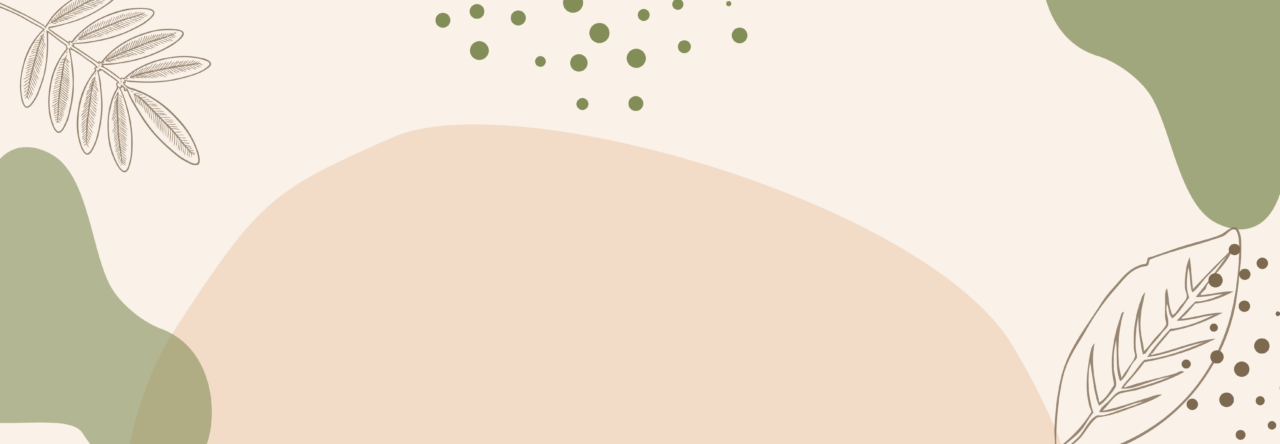Upon graduating the B.Ed program at UNBC, I had the opportunity of teaching a Grade 1 class at Pinewood Elementary. Throughout this time, I gained valuable experience in a classroom setting where I practiced classroom management, lesson planning, unit planning, assessments, parent-teaching conferences, student led conferences, school-based team meetings, etc. I also engaged in a variety of school and class activities including assemblies, concerts, Track & Field, Sports Day, Field Trips etc. I planned excursions pertaining to the curricular content and First Peoples Principles of Learning that my class was currently engaging in. A few Field Trip examples are the release of our salmon fry at Lheidli T’enneh Memorial Park, an ecosystem study at Shane Lake including traditional Indigenous medicinal plant walk, historic visit to the Exploration Place Museum, Gymnastics Center, etc.
I discovered my passion for engaging students through a variety of differentiated instruction and place-based learning activities. I aim to foster a holistic and inclusive learning environment embedded in trauma-informed practices that authentically integrates the Core Competencies, First Peoples Principles of Learning, and curriculum through engaging and experiential lessons. Below I have attached a variety of lessons I delivered throughout my teaching experience :).
Visuals
To differentiate my instruction to meet my students needs, I have created a variety of visuals to support diverse learning styles. I aim to adapt my teaching methods to meet their needs and begin by proactively ensuring their are visuals ready to support my instruction. Below is one example where I have discovered the majority of students thrive in a structured environment that follows a regular routine they know they can rely on.
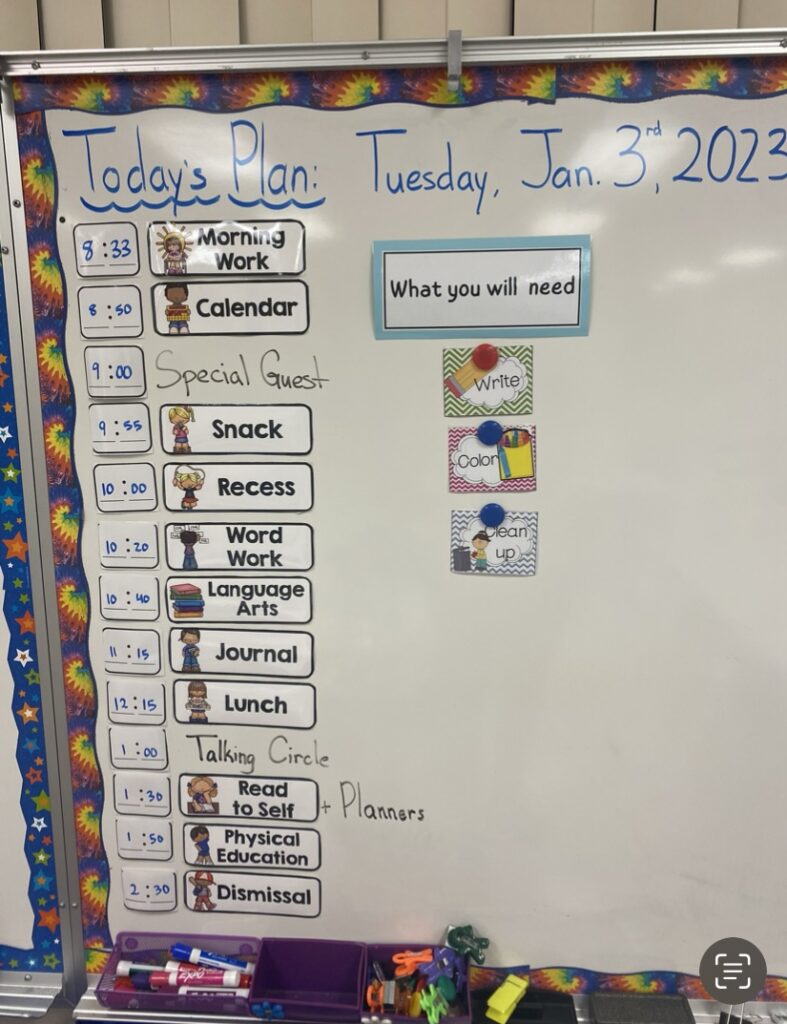
I taught a unit in Science on the water cycle. I incorporated the local Indigenous language (Dakelh) throughout this unit embedded with the science terminology we were learning. I have found that included visuals in my lessons creates an inclusive learning environment pertaining to a variety of learning styles.
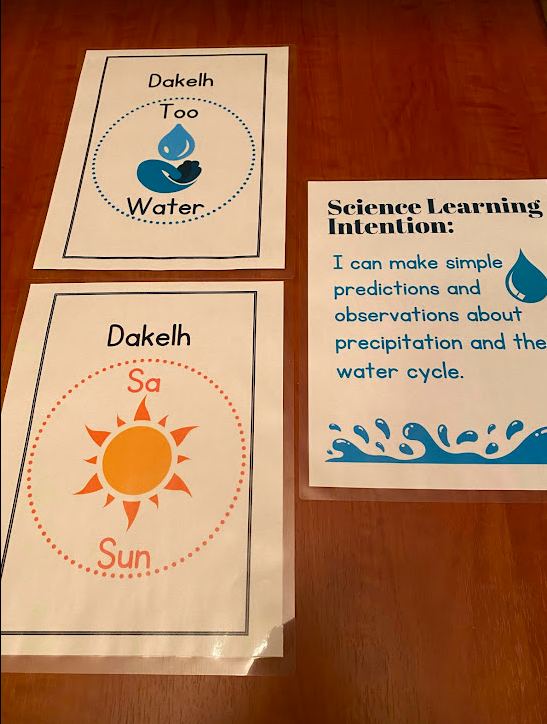
Experiential Learning
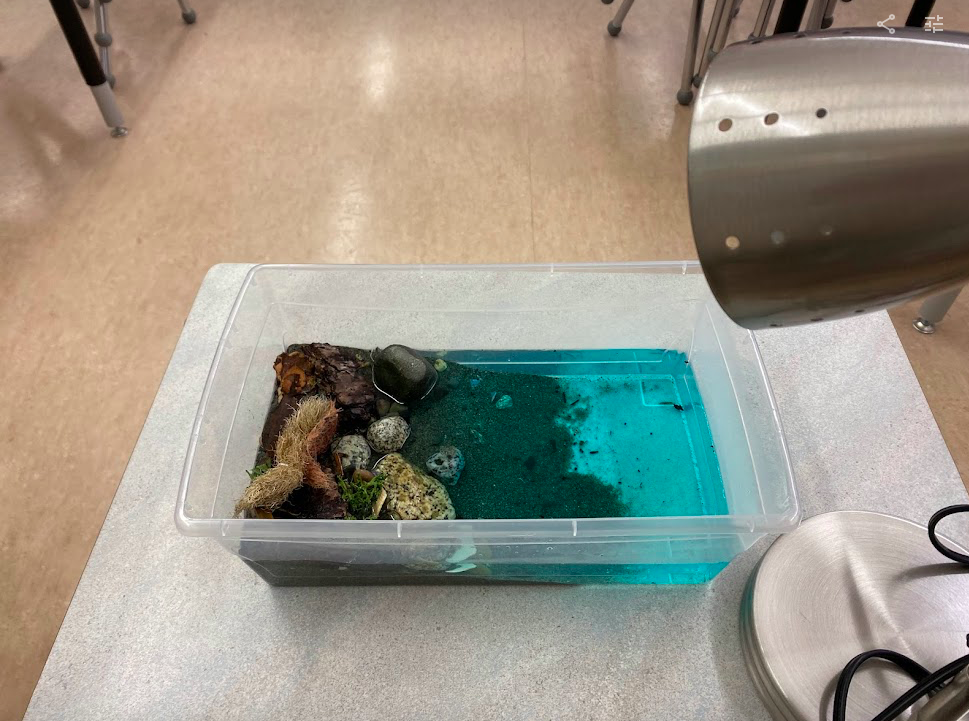
I am passionate about creating a learning environment embedding in experiential learning. In this science lesson, my class conducted an experiment where we observed all stages of the water cycle in diorama’s we built. The heat lamp created water evaporation, which condensed on the plastic wrap on the top, which dripped on the elevated land area, leading to runoff back into the simulated body of water. Students enjoyed engaging with this hands-on lesson!
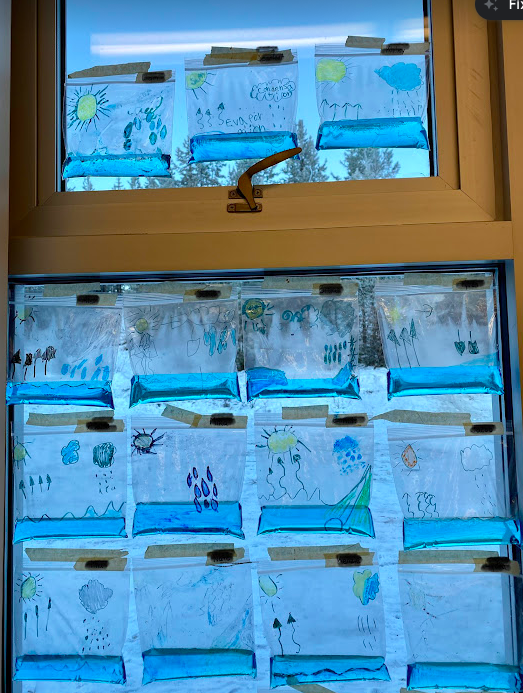
In this lesson, students drew the water cycle on the outside of their individual ziplock baggie. We attached the bag to the window to use solar heat and observed the evaporation process. Students recorded their predictions and observations to engage in critical thinking, cross curricular with English Language Arts.
Indigenous Education
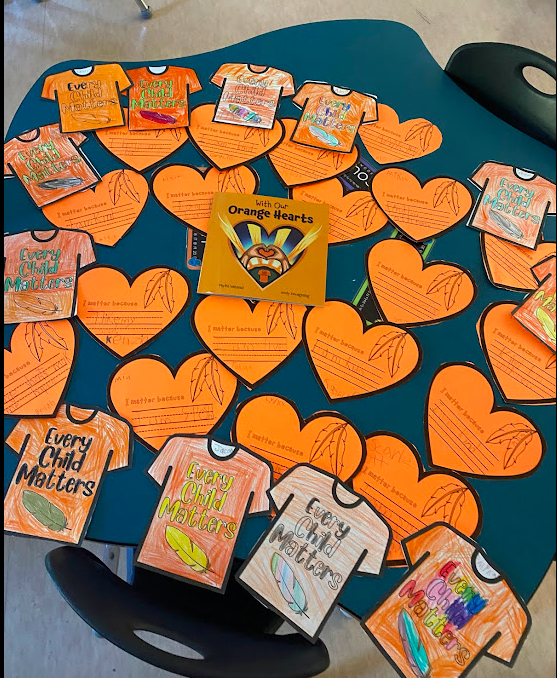
For National Truth and Reconciliation Day, we read the story “With Our Orange Hearts” by Phyllis Webstad. Students identified the significance of the story and shared what life must have been life from Phyllis’ perspective. Incorporating the core competencies and First Peoples Principles of Learning, each student identified a variety of ways that every child matters and displayed them on the orange hearts.
Holistic Learning

In my Grade 1 class, we learned about the salmon life cycle throughout the school year. In the fall, we acquired the salmon eggs and cared for them in our class fish tank. In the late winter, the eggs hatched and students observed the alevins and fry stages. Students recorded their observations and changes, incorporated with the Dakelh language throughout each stage. In the spring, we had a guest visitor from the Fish Hatchery bring adult salmon. They demonstrated a dissection for us, where students got to observe, identify, and interact with the different parts of the salmon. Prior to the demonstration, we prefaced that this was a Science based activity and instead of saying “ew!” we could say “interesting”. Every student took part with great interest!
Later in the spring, we released our salmon into the Fraser River at Lheidli T’enneh Memorial Park. Students learned about the long journey the salmon would take to get to the coast. We invited our IEW along who introduced the salmon release with a drum circle where we sang the Salmon Song and the Swirling River Water Song. It was a rewarding ending to a year long unit the students had been engaging in.
Place-Based Learning
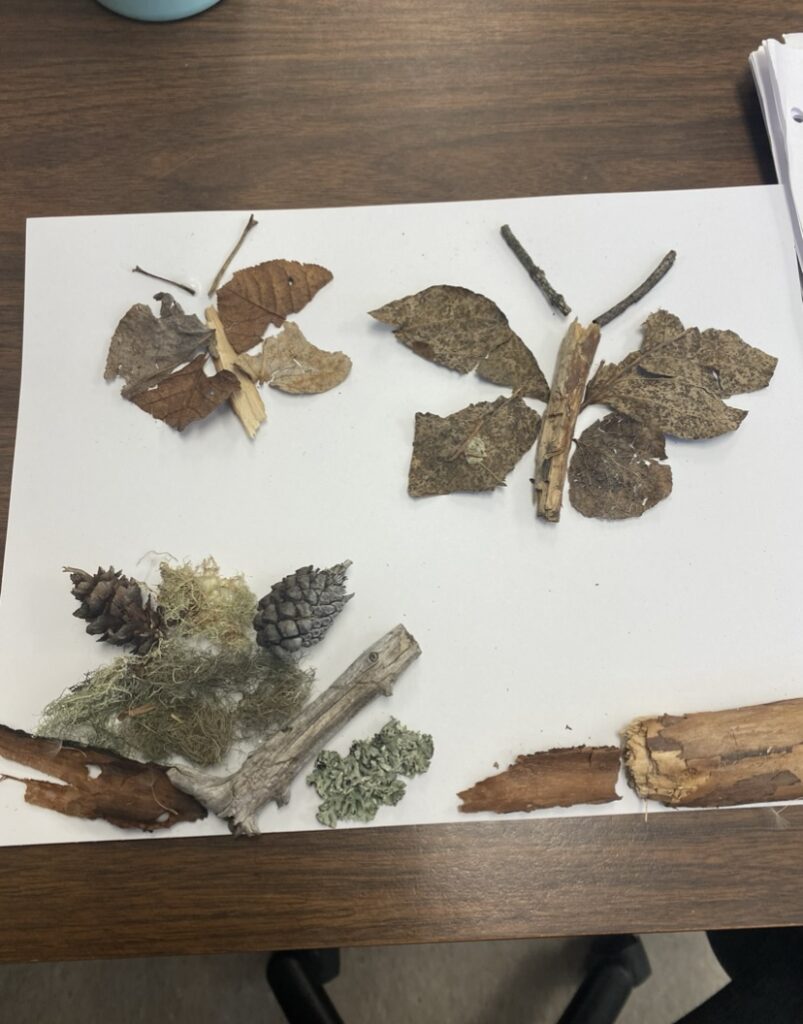
My class engaged in a nature walk with their Big Buddy class, where they searched for a variety of local plant species and collected as many samples as they could (from the ground). After returning to the classroom, students verbally shared their findings with the class. They then created artwork using their nature objects.
Educated Citizens

I am passionate about fostering a learning environment that establishes growth for educated citizens. I taught a cross-curricular Science and Social Studies unit including species in the local environment and communities. Students discovered the importance of a variety of plant and animals species in connection with their own community. Students engaged in the Personal and Social Core Competency where they identified their own responsibilities and impact in the community. They shared the ways they could positively impact the environment and community through this activity cross-curricular with our English Language Art and Fine Art goals.
